160 years ago, Japan and America looked at each other down the barrels of cannon. Japan was in isolation, and America (the whole world, really), wanted in. Five island forts stuffed with cannon (‘daiba’) were built across Tokyo Bay to repel foreign invasion.
They were never used. The foreign invasion came, and Japan opened its doors to the world. Now three of those islands are gone, incorporated into recent land developments. Two remain, one preserved, the other conserved as a habitat for birds.
But why were they built at all? Why was Japan so afraid of letting foreigners in to trade?

Cannon Island #3, accessible by the route at right.

Across the mouth of Tokyo Bay runs Rainbow Bridge, an 800m long suspension bridge connecting Shinagawa with the man-made island of Odaiba.

?The bridge is accessible to pedestrians by this big tower, near Tamachi.
Why did the Japanese fear foreign influence?
“The Bear and the Honeycomb” is a theory in English Teaching that describes Japan’s attitude to the outside world. Japan is the bear, and it wants the honey, which is all the goodies to be had from the outside world- technology, culture, trade goods. But along with the honey come the bees; the power of foreign influence. You can’t get the honey without getting stung by the bees.
As far back as 1600, they had heard of the rampancy of European nations going around colonizing everywhere they could (‘stinging’). So they were wary, understandably so, especially for a nation that had held its cards so close to its chest for so long. Comparisons to England as an ‘island nation’ are irrelevant really- since the amount of island-ness each country had was vastly different. England never had an option of total isolation, since France at its closest point was only 30km away. For Japan, the tip of South Korea is 200km distant from the tip of Kyushu. That allowed a lot of breathing room.
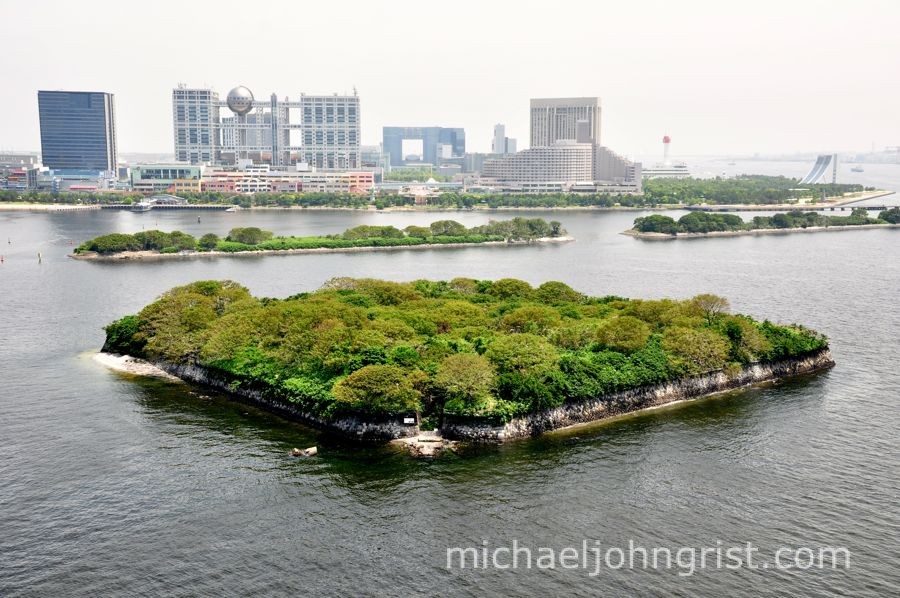
?Island #6 is now a bird preserve, and landing is forbidden. It would be cool to explore, but probably very difficult to achieve. The Bay is very busy, and someone would surely notice an illegal landing.

Close-up of the bird-preserve mouth. You can see that the walls continue inwards in a corridor- probably much the same as the open corridor on island #3.

Back of the bird island #6.

Island #3 and a view up the landing corridor. This would be a helluva place to get delivery services to! Perhaps a jetboat up the Bay could reach there in record time.
??? 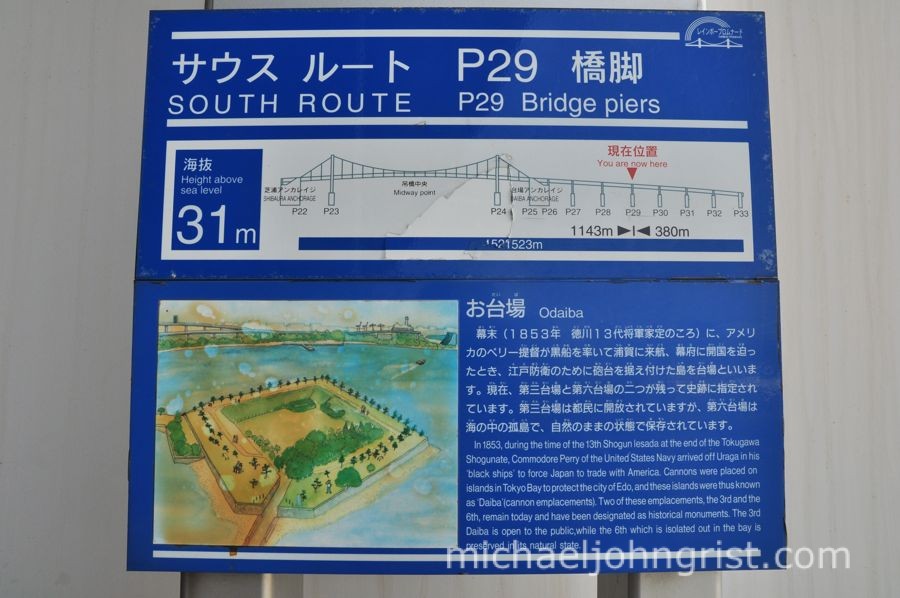
History lesson on the Rainbow Bridge.

That’s Fuji Terebi building on the right.
So the Japanese protected themselves as best they could. They isolated foreign contact to a single island, Dejima, off Nagasaki. They sent scholars out to learn English, but were careful that they did not become literate, so they couldn’t spread any communication widely. They were that concerned about bees.
By 1853, the world had had enough. After Dutch entreaties to open failed, America sent an isolation-busting fleet of 4 steam warships- henceforth called ‘black ships’ for the black steam they belched into the sky- to Tokyo to force the country open.
Old Edo prepared by building cannonades on islands peppered across the bay. There were 11 such islands planned, but only five were completed; each like a mini-fort, built up with walls and towers, stocked with cannon and shot.
They were never used. The black ships came and went, Japan opened itself up, and the cannon islands sank into dis-use.

History lesson at entrance to island #3.

View across island #3.

Map of #3.
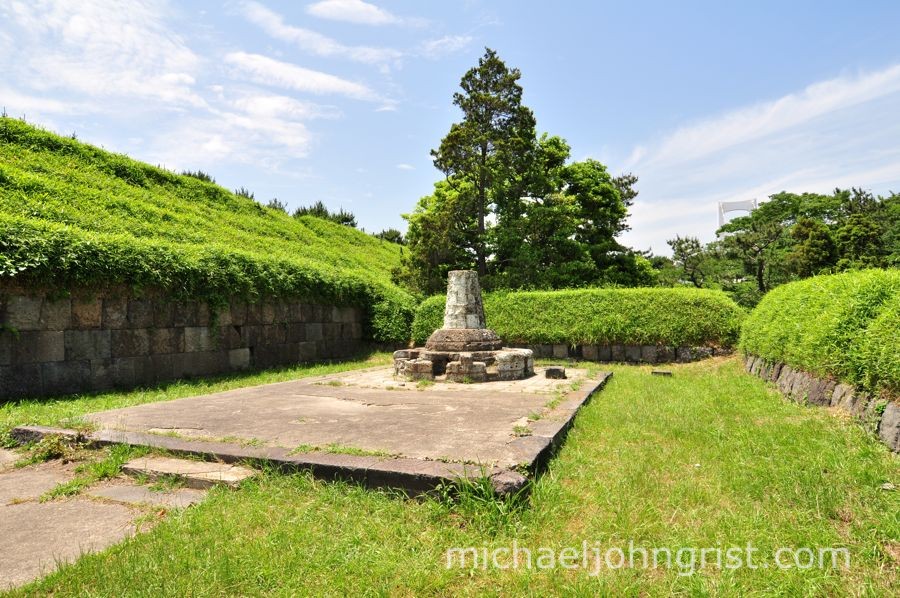
One of the features on island #3.

I’m not sure what it is. Any ideas? A communal toilet? Water trough?

Memorial to something?

Another feature, this runway thing. Doesn’t seem like cannon would be here, as it’s in the middle depression of the island. Perhaps it’s the foundation for a building.

Same, towards Odaiba.

Within the tree cover are a few items of interest. This one must be for drinking water. It might even be modern era, as part of the park’s early preservation efforts?

This path too.

This hole may be old though. An oven?

Down island #3’s jetty corridor, to Rainbow Bridge.
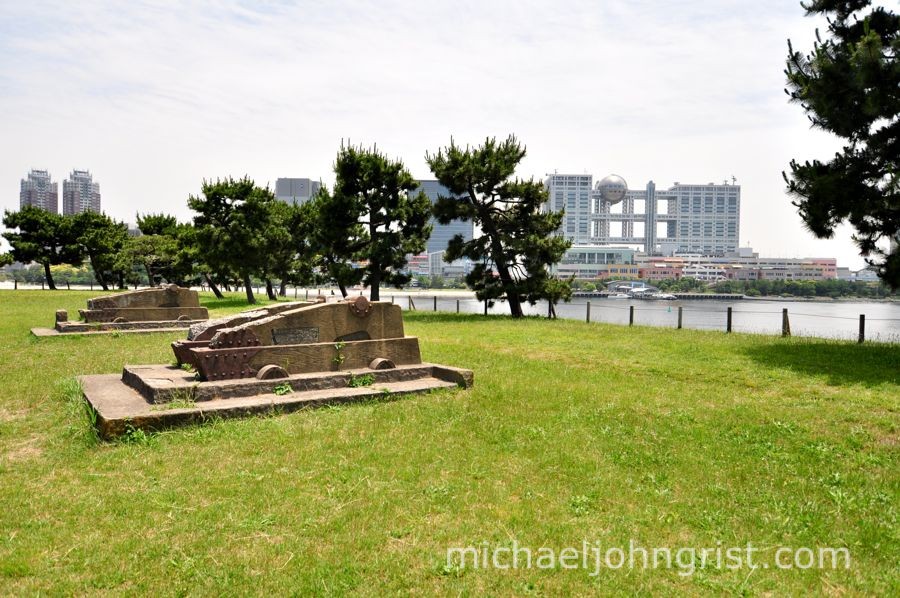
Cannon mounts!!

Only two remain on the island. I wonder if these are even originals, or mock-ups for the preservation?
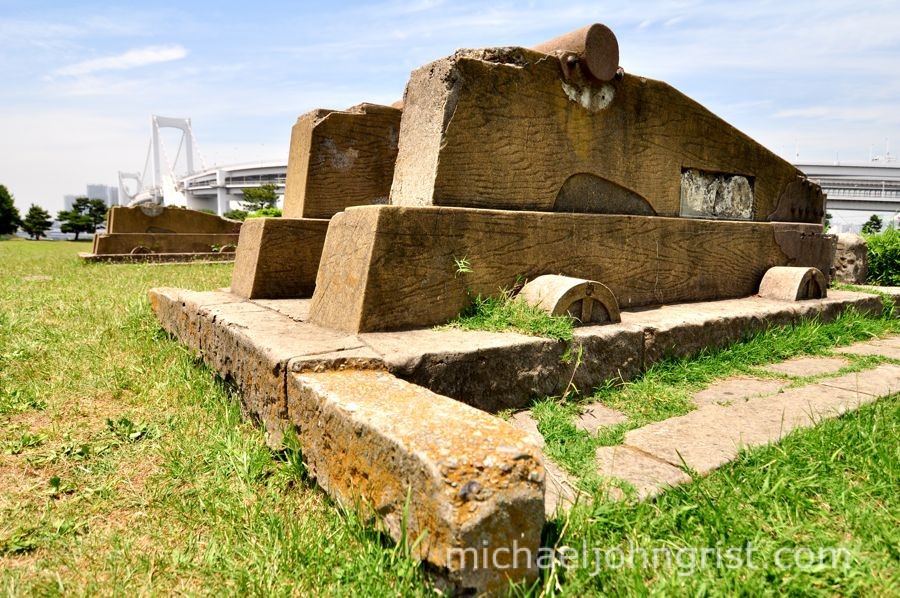
Cannon and the bridge.

And a nice shot of Fuji Terebi to finish.
That’s it for the odaiba cannons. It’s a neat little bit of Tokyo history that you wouldn’t notice if you didn’t walk across Rainbow Bridge sometime. It’s a fun mini city-hike I can recommend, and you end up in odaiba, where there’s lots of fun stuff to do too.
You can see more military type ruins here.
And more general ruins in the haikyo gallery here.

Comments 3
It’s funny that you talk about this place.
I really love Tamachi Area and I really often cross the Rainbow bridge on sunday.
I badly want to go to the preserve island. I think it can be a nice experience looking for remaining artefact.
Could you write sth about Shibuya ? 🙂
Great article!